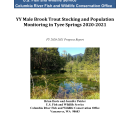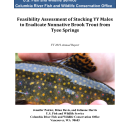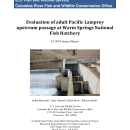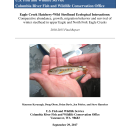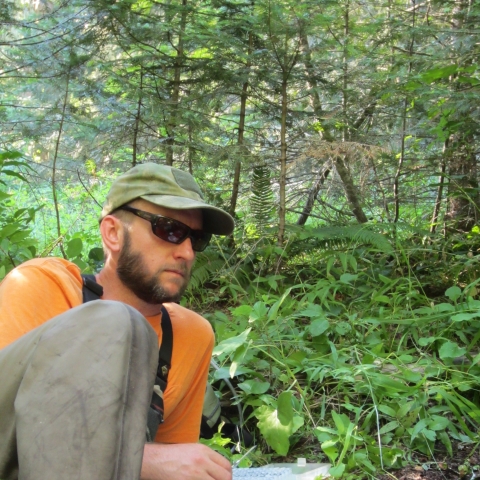
1211 SE Cardinal Court
Suite 100
Vancouver, WA 98683
United States
About Brian Davis
Working with the Detection and Technology Group, most of Brians' duties are related to passive integrated transponder (PIT) tag technology; includes building, installing and maintaining antennas used to detect PIT tags. He currently works at PIT detection sites located at our National Fish Hatcheries, the upper Clackamas Basin, Tryon Creek and beyond. Brian also provides field support for various research projects around the office and conducts data collection, storage, cleaning, and analyses.
Brian is co-leading efforts to evaluate the use of YY male fish to extirpate Brook Trout from the water supply at Carson National Fish Hatchery. He is adept at using passive integrated transponder (PIT) technology to monitor the abundance, migration and survival of endangered and threatened fish, and as a result serves as the USFWS representative on the Instream PIT Tag Detection System Committee. Brian is also an avid R (programming language) user and is currently providing analytical support for the interagency-driven Oregon Bull Trout Strategy in the form of a decision support tool.
Program: Natural Population Assessment
Current Projects:
1. Modeling an invasive Brook Trout population and potential control methods to better understand how to eradicate them and other invasive species invasive species
An invasive species is any plant or animal that has spread or been introduced into a new area where they are, or could, cause harm to the environment, economy, or human, animal, or plant health. Their unwelcome presence can destroy ecosystems and cost millions of dollars.
Learn more about invasive species
2. Providing analytical support for making management decisions concerning Bull Trout conservation and recovery efforts in Oregon
3. Building, maintaining, and improving PIT tag detection systems
Past Projects:
1. Electrofishing in the South Fork Walla Walla River for a long-term Bull Trout population trend monitoring project
2. Electrofishing steelhead in Eagle Creek, Estacada for hatchery/wild interactions study
3. Chinook salmon reintroduction in the upper White Salmon as mitigation for the removal of Condit dam
Background:
Brian studied Fisheries Science at MT. Hood Community College before completing his degree at Oregon State University.
At CRFWCO Since: 2008
